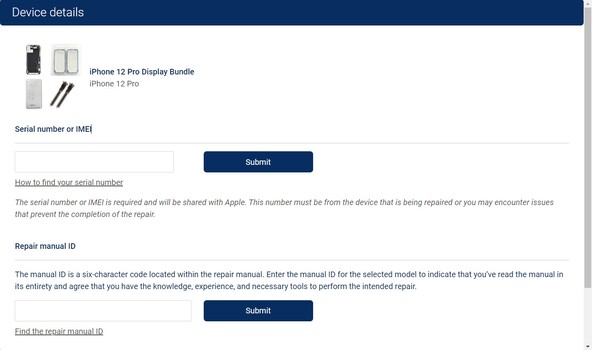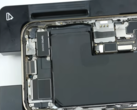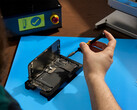4 sneaky ways Apple's Self Service Repair is undermining the right to repair movement

1. Parts availability needs to improve
Part of the purpose of the right to repair movement is to extend the usable lifetime of electronics and gadgets, and Apple's Self Service Repair program practically spits in the face of this ethos by only offering spare parts and repair guides for the iPhone 12 and 13 families — some of the newest devices to come from the tech giant.
Whether this approach is indicative of future parts availability is yet to be seen — Apple did say the program would start with iPhones and expand to other product lines in the future — but the lack of support for both older iPhones and its other product lines at launch does not bode well for the future of the program.
2. Shipping almost 90 lbs of tools is not the way
Do we really need a press to apply battery adhesive, Apple? If you've ever replaced a phone screen or battery, you'll know that while not trivial, the process isn't particularly complicated and certainly doesn't require close to 90 lbs of equipment to do either. Apple's insistence on forcing users into its way of doing things by foisting insane amounts of machinery onto the end-user or DIYer is discouraging to individuals just getting into tech who would like to repair their devices.
For a company that leans so heavily on its low environmental impact, you might expect that Apple would want to avoid shipping excessive amounts of equipment to perform simple repairs when those same repairs can be accomplished with much more basic tools. Given the examples set by other competitors — iFixit, for example, ships you the parts and a small kit of hand tools to get the job done — one has to wonder whose idea it was to ship a whole repair workshop to your front door.
3. Overcomplicated procedures engineered to discourage repair?
Apart from the hardware that Apple insists on shipping to you, there is also a surprisingly well-written instruction manual you have to read through — and prove to Apple you have read by entering a secret code found only in the manual — before Apple will even ship you a single spare. On top of that, a replacement display needs to be calibrated, which can only be done with a call or chat with Apple support.
While this gatekeeping is potentially better for Apple, the end-user, and the environment — ensuring fewer failed repairs that would lead to unnecessary waste and production — overcomplicating repair is a typical Apple move that could be seen as a deterrent to DIY repair.
If you are the DIY type and would like to repair your devices, you can start with an iFixit Pro Tech Toolkit, available on Amazon.
4. The pricing just doesn't make sense
One has to wonder if the Apple Self Service Repair program is simply a way to push more people towards the company's AppleCare+ program. Compare the price of an iPhone 12 Pro replacement screen from iFixit to the Apple Self Service Repair alternative — while the display assembly and all the necessary parts do come out US$13.64 cheaper on the Apple Self Service Repair store, that is only after accounting for the discount from sending the old screen back to Apple. Once you account for the US$49 cost of the tool rental, you end up with the iFixit kit at around US$35 cheaper.
That's not even to mention that the same iPhone 12 Pro screen repair costs almost US$10 more when going through the Self Service Repair program — Apple's Genius Bar charges US$279 for out-of-warranty repair, while the DIY option comes in at a total of US$286.34 Given the extra inconvenience and excessive costs involved with the Self Service Repair program, it definitely doesn't seem worthwhile to go the DIY route, so one can't help but wonder if the program is simply a PR stunt by Apple. If you put on your tinfoil hat for a moment, you might even come to the conclusion that the program is some 4D-chess move to discredit the right to repair movement.















